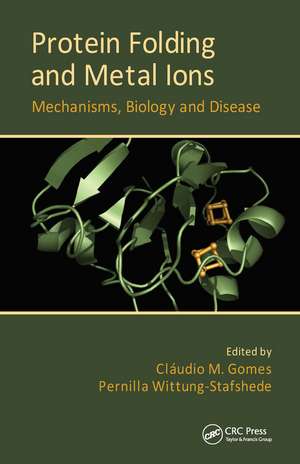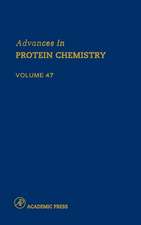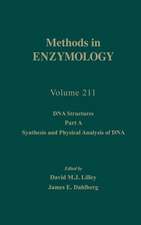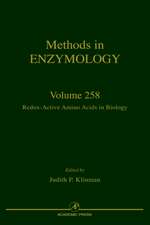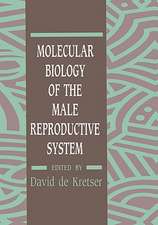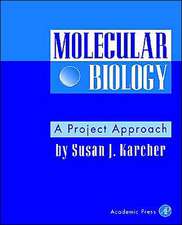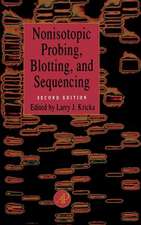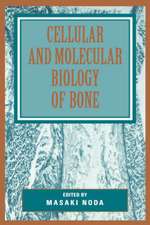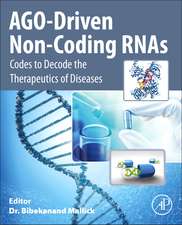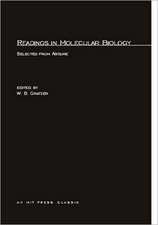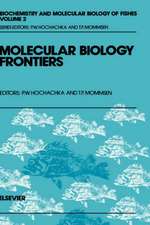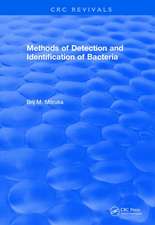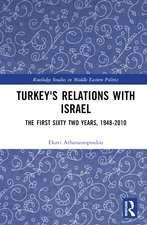Protein Folding and Metal Ions: Mechanisms, Biology and Disease
Editat de Cláudio M. Gomes, Pernilla Wittung-Stafshedeen Limba Engleză Hardback – 5 oct 2010
Divided into four sections, this volume:
- Provides case study examples of protein folding and stability studies in particular systems or proteins that comprise different metal ions of co-factors
- Reviews the proteins that shuttle metal ions in the cell to a particular target metalloprotein
- Illustrates how metal binding can be connected to pathological protein conformations in unrelated diseases, from cancer to protein deposition disorders such as Parkinson’s disease
- Addresses protein redesign of metal-containing proteins by computational methods, folding simulation studies, and work on model peptides — dissecting the relative energetic contribution of metals sites to protein folding and stability
| Toate formatele și edițiile | Preț | Express |
|---|---|---|
| Paperback (1) | 584.63 lei 6-8 săpt. | |
| CRC Press – 30 sep 2020 | 584.63 lei 6-8 săpt. | |
| Hardback (1) | 1331.73 lei 6-8 săpt. | |
| CRC Press – 5 oct 2010 | 1331.73 lei 6-8 săpt. |
Preț: 1331.73 lei
Preț vechi: 1624.06 lei
-18% Nou
Puncte Express: 1998
Preț estimativ în valută:
254.82€ • 266.77$ • 210.85£
254.82€ • 266.77$ • 210.85£
Carte tipărită la comandă
Livrare economică 05-19 aprilie
Preluare comenzi: 021 569.72.76
Specificații
ISBN-13: 9781439809648
ISBN-10: 143980964X
Pagini: 308
Ilustrații: 75 b/w images, 3 tables and 121
Dimensiuni: 156 x 234 x 19 mm
Greutate: 0.59 kg
Ediția:1
Editura: CRC Press
Colecția CRC Press
Locul publicării:Boca Raton, United States
ISBN-10: 143980964X
Pagini: 308
Ilustrații: 75 b/w images, 3 tables and 121
Dimensiuni: 156 x 234 x 19 mm
Greutate: 0.59 kg
Ediția:1
Editura: CRC Press
Colecția CRC Press
Locul publicării:Boca Raton, United States
Public țintă
Researchers in protein biochemistry and physics with interests relating to structural biology, bioinorganic chemistry, protein folding and disease, and molecular and cellular aspects of metals in biological systems.Cuprins
FOLDING AND STABILITY OF METALLOPROTEINS : Metal Ions, Protein Folding, and Conformational States: An Introduction. The Folding Mechanism of c-Type Cytochromes. The Mechanism of Cytochrome c Folding: Early Events and Kinetic Intermediates. Stability and Folding of Copper-Binding Proteins. Iron-Sulfur Clusters, Protein Folds, and Ferredoxin Stability. Folding and Stability of Myoglobins and Hemoglobins. MECHANISMS OF METAL TRANSPORTERS, AND ASSEMBLY: Frataxin: An Unusual Metal-Binding Protein in Search of a Function. Mechanism of Human Copper Transporter Wilson’s Disease Protein. METAL IONS, PROTEIN CONFORMATION, AND DISEASE: α-Synuclein and Metals.
Zinc and Misfolding. The Octarepeat Domain of the Prion Protein and Its Role in Metal Ion Coordination and Disease. METALLOPROTEIN DESIGN, SIMULATION, AND MODELS: Metallopeptides as Tools to Understand Metalloprotein Folding and Stability. The Folding Landscapes of Metalloproteins.
Zinc and Misfolding. The Octarepeat Domain of the Prion Protein and Its Role in Metal Ion Coordination and Disease. METALLOPROTEIN DESIGN, SIMULATION, AND MODELS: Metallopeptides as Tools to Understand Metalloprotein Folding and Stability. The Folding Landscapes of Metalloproteins.
Notă biografică
Cláudio M. Gomes is group leader at the Instituto Tecnologia Química e Biológica, a research institute affiliated with the Universidade Nova de Lisboa, Oeiras, Portugal. Born in 1970, Cláudio earned his PhD from the Instituto Tecnologia Química e Biológica in 1999, as a Gulbenkian PhD program in biology and medicine graduate. From 2000 onward, he gradually switched his research interests from bioenergetics and metalloprotein structure-function toward protein folding and structural biophysics of misfolding diseases. Until setting up his independent laboratory in 2003, he was assistant professor at the Faculdade de Ciências e Tecnologia, Universidade Nova de Lisboa, where he started teaching in 2000. Cláudio has published more than 70 peer-reviewed papers.
Pernilla Wittung-Stafshede has been a professor in biological chemistry in the Chemistry Department at Umeå University, Umeå, Sweden since 2008. Born in 1968, she earned a PhD in physical chemistry from Chalmers University, Gothenburg, Sweden, in 1996. During 1997–1998, she did a postdoctoral period at Caltech, Pasadena, California. In 1999 she began her independent research career, with a focus on the role of metals in protein folding, as a chemistry professor at Tulane University, New Orleans, Louisiana. After 5 years at Tulane, she moved to Rice University, Houston, Texas in 2004 and became a professor in biochemistry. Pernilla has graduated 10 PhD students to date, has obtained several awards, and has published over 150 peer-reviewed papers.
Pernilla Wittung-Stafshede has been a professor in biological chemistry in the Chemistry Department at Umeå University, Umeå, Sweden since 2008. Born in 1968, she earned a PhD in physical chemistry from Chalmers University, Gothenburg, Sweden, in 1996. During 1997–1998, she did a postdoctoral period at Caltech, Pasadena, California. In 1999 she began her independent research career, with a focus on the role of metals in protein folding, as a chemistry professor at Tulane University, New Orleans, Louisiana. After 5 years at Tulane, she moved to Rice University, Houston, Texas in 2004 and became a professor in biochemistry. Pernilla has graduated 10 PhD students to date, has obtained several awards, and has published over 150 peer-reviewed papers.
Descriere
Discussing the role of metal ions in protein folding, this volume provides case examples of protein folding and stability studies in particular systems as well as proteins that comprise different metal ions or cofactors. It reviews those proteins that shuttle metal ions within the cell to a particular target metalloprotein and illustrates how metal binding can be linked to pathological protein conformations in unrelated diseases. The final section addresses the redesign of metal-containing proteins by computational methods, folding simulation studies, and work on model peptides.
